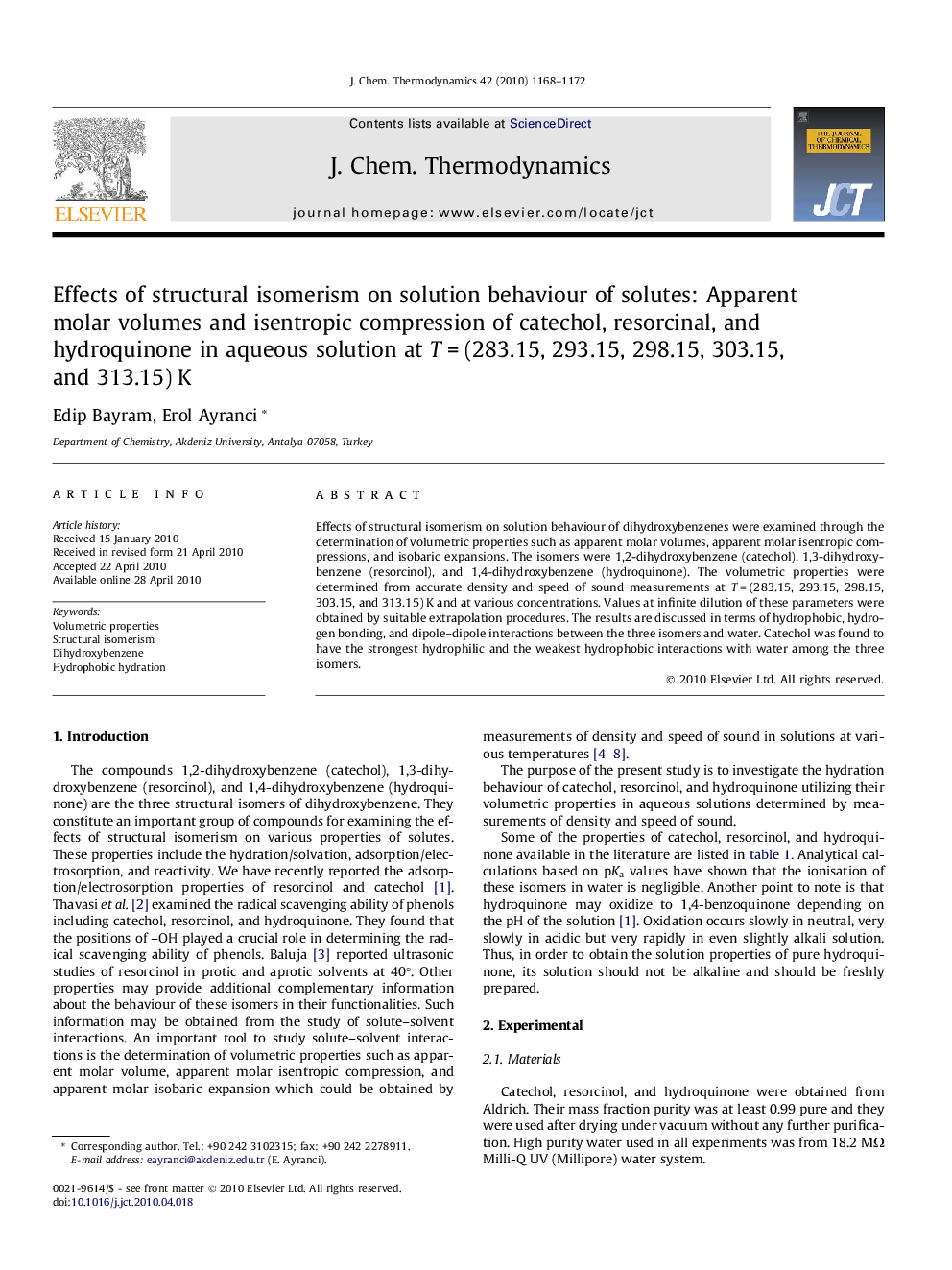| Article ID | Journal | Published Year | Pages | File Type |
|---|---|---|---|---|
| 216739 | The Journal of Chemical Thermodynamics | 2010 | 5 Pages |
Effects of structural isomerism on solution behaviour of dihydroxybenzenes were examined through the determination of volumetric properties such as apparent molar volumes, apparent molar isentropic compressions, and isobaric expansions. The isomers were 1,2-dihydroxybenzene (catechol), 1,3-dihydroxybenzene (resorcinol), and 1,4-dihydroxybenzene (hydroquinone). The volumetric properties were determined from accurate density and speed of sound measurements at T = (283.15, 293.15, 298.15, 303.15, and 313.15) K and at various concentrations. Values at infinite dilution of these parameters were obtained by suitable extrapolation procedures. The results are discussed in terms of hydrophobic, hydrogen bonding, and dipole–dipole interactions between the three isomers and water. Catechol was found to have the strongest hydrophilic and the weakest hydrophobic interactions with water among the three isomers.
